Gavin Freeguard and Aron Cheung argue that while civil service staff numbers are up, there’s still little progress on improving ethnic diversity at the top and getting women at the very top
Staff numbers are up on last year
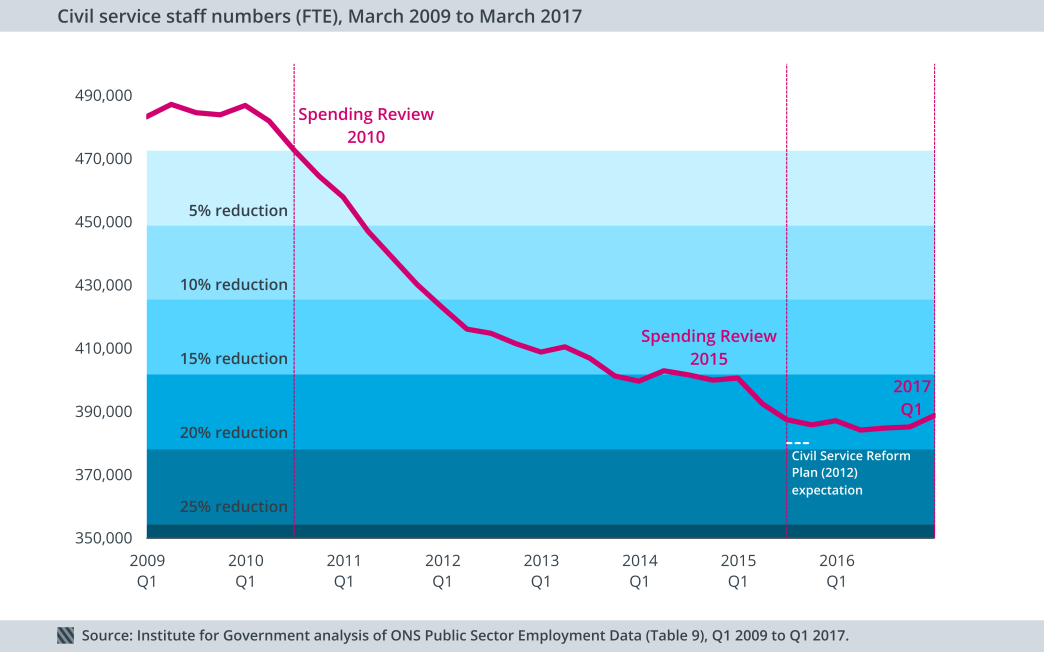
Civil service staff numbers increased over the last year, from 387,040 in March 2016 to 388,700 in March 2017. The increase in staff numbers at the Department for Environment, Food & Rural Affairs - one of the departments most heavily affected by Brexit - suggests the overall rise reflects recruitment to prepare for the challenges of leaving the European Union. Overall numbers are still only just above their lowest level since the Second World War.
Women are still under-represented at senior grades…
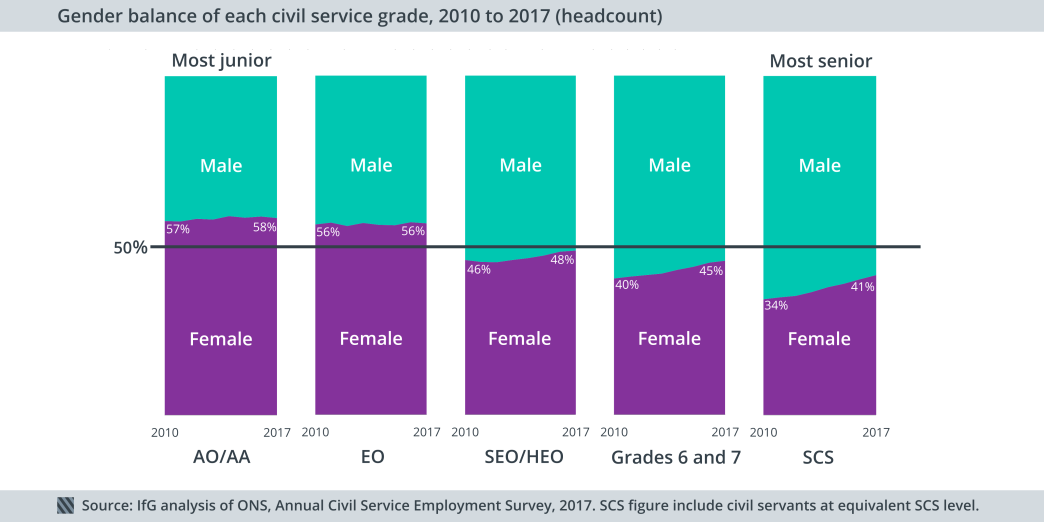
The percentage of women at each grade falls with each step up in seniority: Women outnumber men at the most junior grades (58% are women) but men outnumber women at the most senior (where 41% of senior civil servants are women).
Since 2010 the gender balance in junior grades (Administrative Officer, Administrative Assistant and Executive Officer) has remained mostly the same, while there has been an increase in the percentage of women in senior roles.
…but there are more women in the senior civil service than ever before
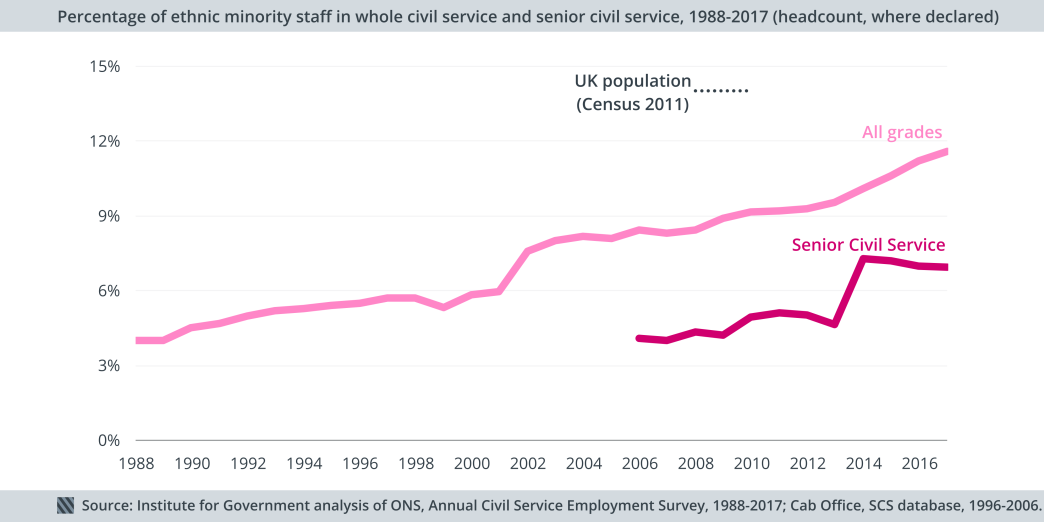
41% of all senior civil servants are now women, up from 34% in 2010. However, there are still only five women leading Whitehall departments (Department for Transport, Department for International Trade, Department for Environment, Food & Rural Affairs, Department for Culture Media & Sport and Department for Communities and Local Government) and some key departments have never had a female permanent secretary - including the Foreign Office, Treasury and Cabinet Office.
Progress is stalling for ethnic minority civil servants at senior levels
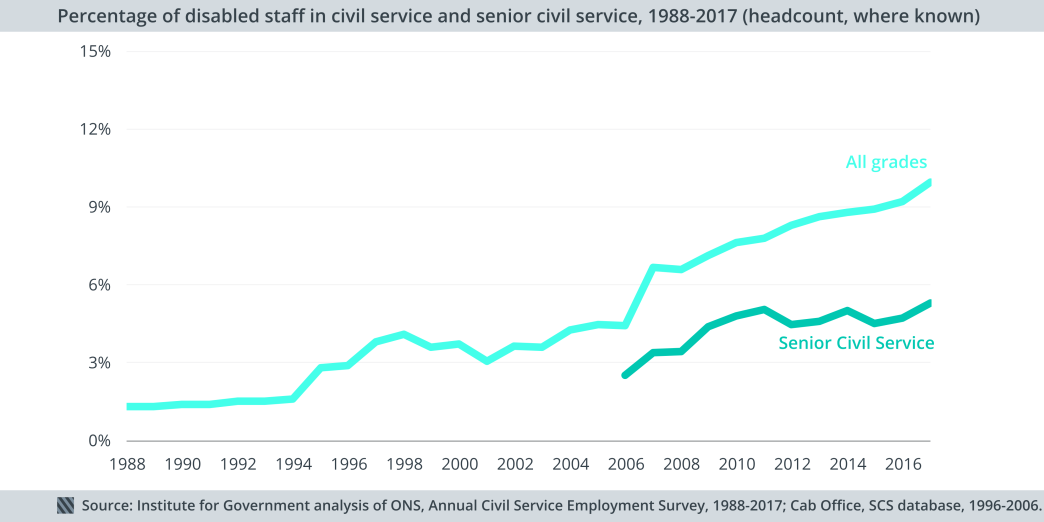
Despite initiatives like the Talent Action Plan and senior race champions, there has been no improvement since last year in the percentage of senior civil servants who are from an ethnic minority - 7%, compared to 11.6% of all civil servants (where ethnicity is known) and 14% of the general population (as of the 2011 Census).
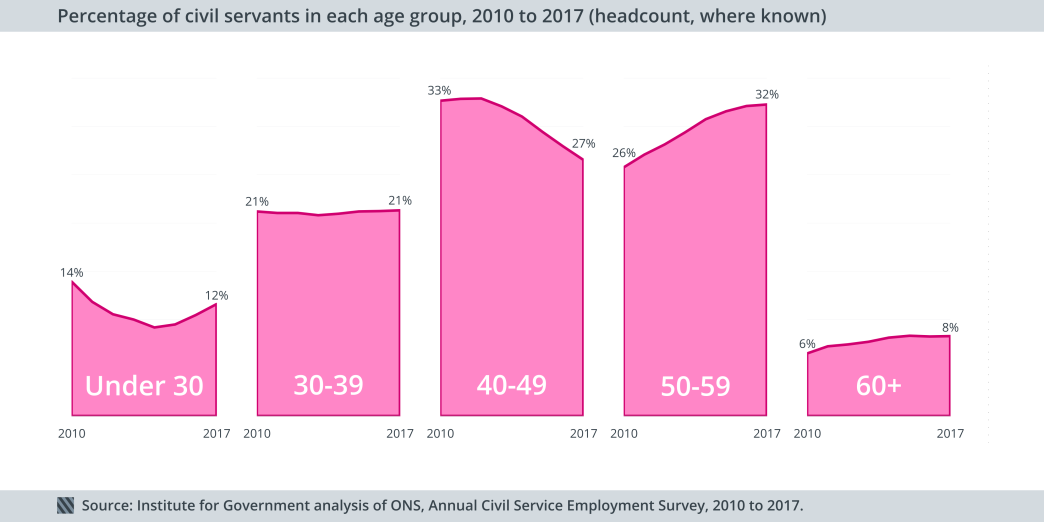
On a more positive note, the representation of disabled civil servants at senior level has improved slightly: 5.3% of all senior civil servants are disabled, up from 4.7% in 2016, while 10% of all civil servants are disabled (where the disability status is known).
However, the large percentage of non-responses on ethnicity (where 23.4% did not declare) and disability (32.8%) makes it difficult for the civil service to measure its progress on increasing diversity with absolute accuracy.
The percentage of civil servants under 30 is increasing
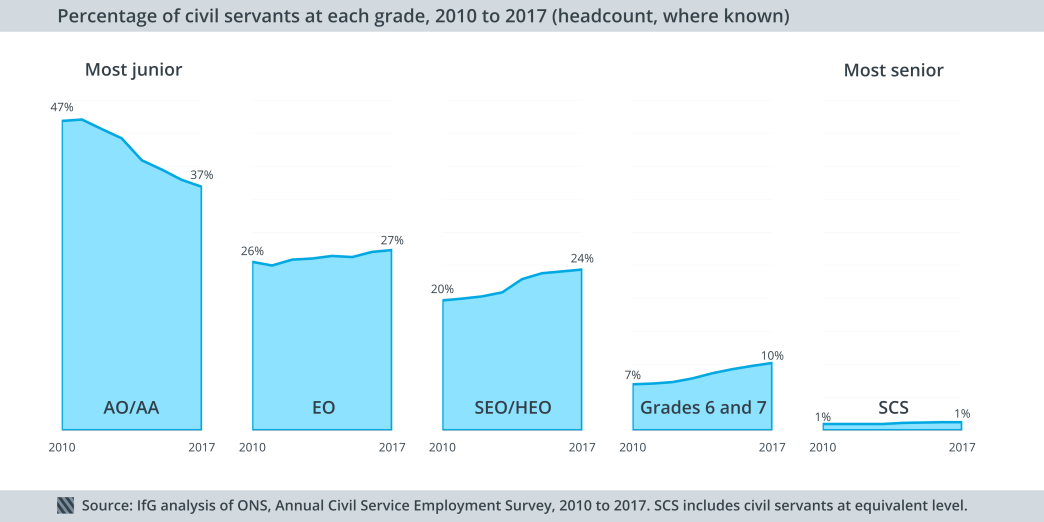
11.6% of civil servants are aged under 30, up slightly from 10.5% in 2016, though still down from 14% in 2010. Not recruiting younger civil servants could have an impact on the skills coming into the civil service (as suggested by the National Audit Office on digital skills).
40.5% of the civil service is over the age of 50. This is likely to be driven by the age of the large delivery departments like the Ministry of Defence, the Department for Work and Pensions, HM Revenue & Customs and the Ministry of Justice.
Jobs are concentrated in senior grades
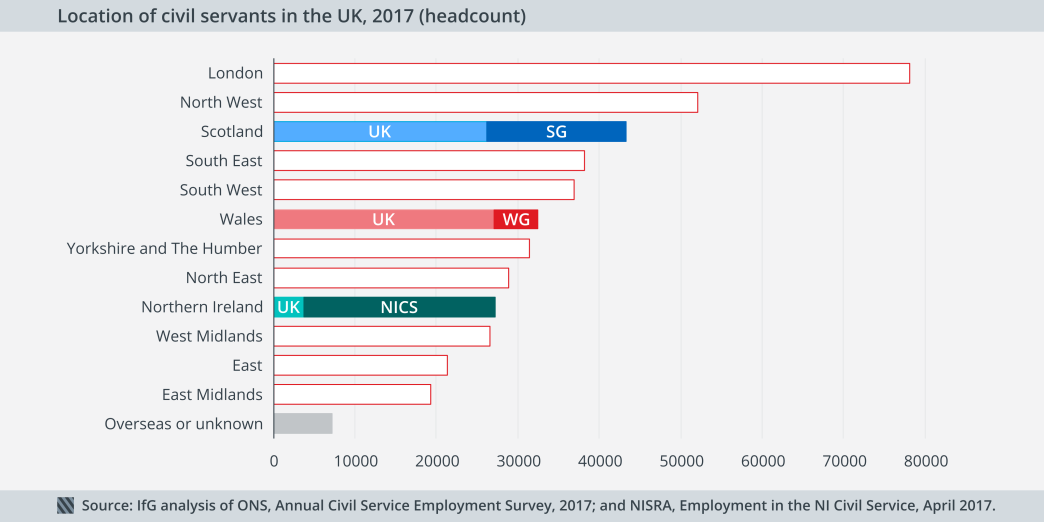
The percentage of the civil service in the most junior grades continues to fall, with just under 37% of all civil servants in the Administrative Officer or Administrative Assistant grades. This compared to 47% in 2010 - although these grades remain the largest in size.
The percentage of civil servants in all other grades has risen slightly: 11.5% work in Grades 6 and 7 and at senior civil service level, compared to 8% in 2010.
Civil servants are still mainly based in London
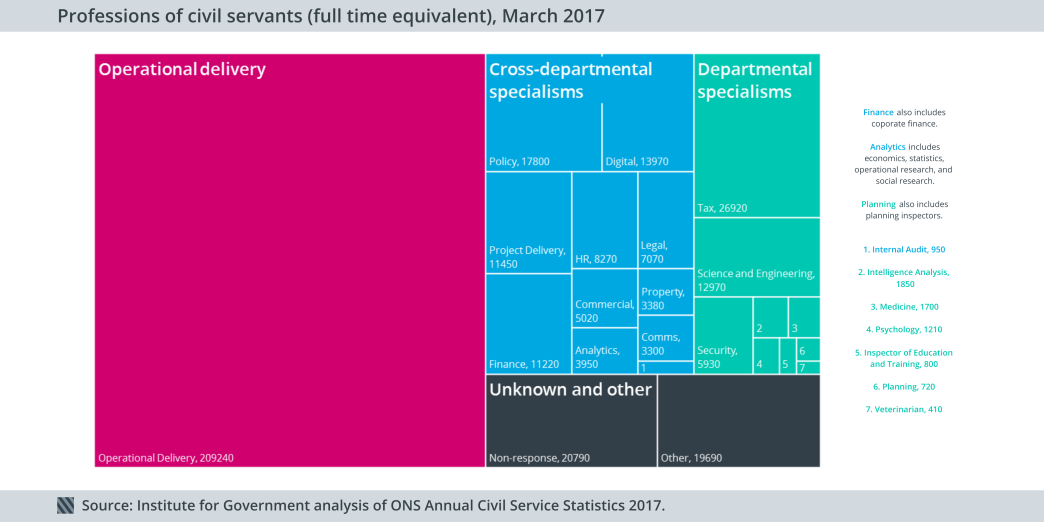
18.6% of civil servants are based in London, down slightly from 19% in 2016 but still up from 16.5% in 2010. The Conservative manifesto pledged to move more civil servants (including senior ones) out of London.
The overall number of civil servants has increased the most in Wales (up 1,250), the North East (up 480) and the North West (up 390). The biggest falls were seen in the South East (down 860) and the East of England (down 720).
Some civil servants, including approximately 5,000 GCHQ civil servants in the South West of England, have been excluded from the numbers.
We still do not know the profession of one in ten civil servants
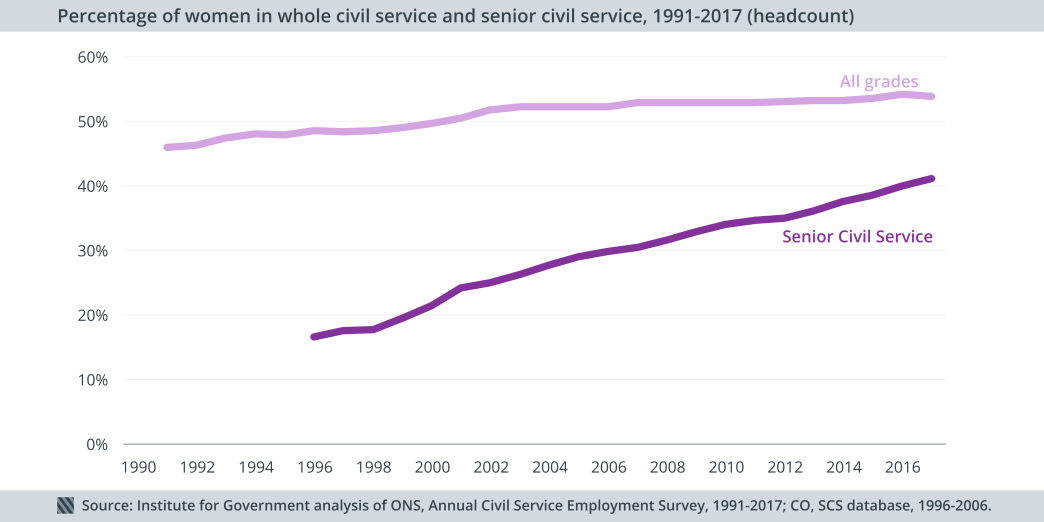
More than half (54%) of the Government's 389,000 civil servants work in operational delivery. This is a broad category, including roles ranging from case handlers at the Department of Work and Pensions to border force officers at the Home Office.
Cross-departmental specialisms now make up 22% of civil service roles, covering areas such as policy, finance or digital. These roles are needed in all Whitehall departments, and are performed in broadly similar ways within each department.
Departmental specialisms now make up 14% of civil service roles. These employees offer expertise on areas that are especially relevant to one or a few departments, such as tax professionals at HM Revenue & Customs, or education inspectors at the Department of Education.
The profession of one in ten civil servants was either not reported or classified as a vague ‘other’.
- Supporting document
- Whitehall monitor 17.pdf (PDF, 2.17 MB)
- Topic
- Civil service